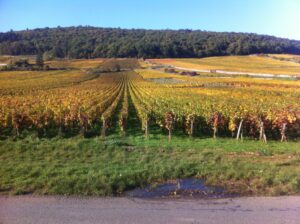Côte d’Or
The bedrock, soil, drainage and microclimate change repeatedly, and for the same reasons the wines of the villages along the hillside might taste different, just as major variations exist within each commune. For these reasons generalizations are hard to make! Côte de Nuits produces almost exclusively red wine, while Côte de Beaune produces both red and white wines.
Broadly speaking, the reds of Côte de Nuits tend to be fuller, slightly more tannic and robust, have more richness and length than those of the Côte de Beaune, and they often take longer to mature. The red wines from Côte de Beaune offer slightly less body, less tannin, but represent a marvelous source of large quantities of elegant reds, often filled with aromas and flavors of red fruits. However, one should always be aware of exceptions like Chambolle-Musigny and Vosne-Romanée to the north, and Corton and Pommard to the south!
The white wines of Côte de Beaune (Corton-Charlemagne, Meursault, Puligny-Montrachet and Chassagne-Moutrachet) might represent, at their best, the most famous and delicious white wines from the Chardonnay grape in the world, but also the most expensive. Again major differences are observed between the long-lived and rich Corton-Charlemagne, the nutty luscious, easy-to-drink Meursault, the elegant and steely Puligny-Montrachet and the opulent, fleshy Chassagne-Montrachet.
